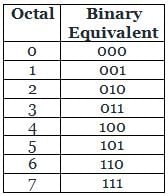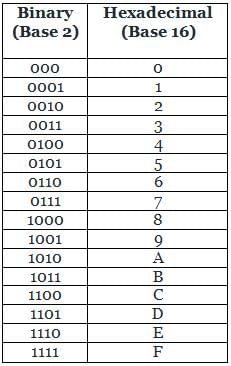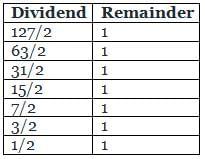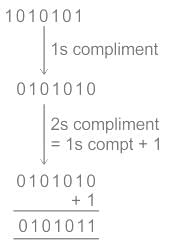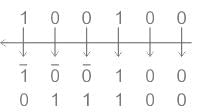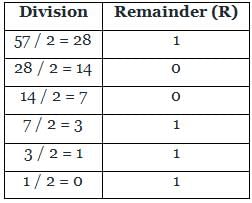Electronics and Communication Engineering (ECE) Exam > Electronics and Communication Engineering (ECE) Tests > Test: Number Systems & Binary Codes - 2 - Electronics and Communication Engineering (ECE) MCQ
Test: Number Systems & Binary Codes - 2 - Electronics and Communication Engineering (ECE) MCQ
Test Description
10 Questions MCQ Test - Test: Number Systems & Binary Codes - 2
Test: Number Systems & Binary Codes - 2 for Electronics and Communication Engineering (ECE) 2025 is part of Electronics and Communication Engineering (ECE) preparation. The Test: Number Systems & Binary Codes - 2 questions and answers have been prepared
according to the Electronics and Communication Engineering (ECE) exam syllabus.The Test: Number Systems & Binary Codes - 2 MCQs are made for Electronics and Communication Engineering (ECE) 2025 Exam.
Find important definitions, questions, notes, meanings, examples, exercises, MCQs and online tests for Test: Number Systems & Binary Codes - 2 below.
Solutions of Test: Number Systems & Binary Codes - 2 questions in English are available as part of our course for Electronics and Communication Engineering (ECE) & Test: Number Systems & Binary Codes - 2 solutions in
Hindi for Electronics and Communication Engineering (ECE) course.
Download more important topics, notes, lectures and mock test series for Electronics and Communication Engineering (ECE) Exam by signing up for free. Attempt Test: Number Systems & Binary Codes - 2 | 10 questions in 30 minutes | Mock test for Electronics and Communication Engineering (ECE) preparation | Free important questions MCQ to study for Electronics and Communication Engineering (ECE) Exam | Download free PDF with solutions
Test: Number Systems & Binary Codes - 2 - Question 1
Which of the following statement is NOT correct?
Detailed Solution for Test: Number Systems & Binary Codes - 2 - Question 1
Test: Number Systems & Binary Codes - 2 - Question 2
Conversion of (98.75)10 into binary, octal and hexadecimal number system, respectively, is:
Detailed Solution for Test: Number Systems & Binary Codes - 2 - Question 2
Test: Number Systems & Binary Codes - 2 - Question 3
Convert the 127 decimal number into binary.
Detailed Solution for Test: Number Systems & Binary Codes - 2 - Question 3
Detailed Solution for Test: Number Systems & Binary Codes - 2 - Question 4
Detailed Solution for Test: Number Systems & Binary Codes - 2 - Question 5
Test: Number Systems & Binary Codes - 2 - Question 6
The decimal equivalent of the binary number (1101)2 is
Detailed Solution for Test: Number Systems & Binary Codes - 2 - Question 6
Detailed Solution for Test: Number Systems & Binary Codes - 2 - Question 7
Test: Number Systems & Binary Codes - 2 - Question 8
Find the decimal equivalent of the 6-bit binary number (101.101)2
Detailed Solution for Test: Number Systems & Binary Codes - 2 - Question 8
Test: Number Systems & Binary Codes - 2 - Question 9
The decimal number (57.375)10 when converted to binary number takes the form:
Detailed Solution for Test: Number Systems & Binary Codes - 2 - Question 9
Test: Number Systems & Binary Codes - 2 - Question 10
The range of numbers represented by an 8-bit two’s complement representation is
Detailed Solution for Test: Number Systems & Binary Codes - 2 - Question 10
Information about Test: Number Systems & Binary Codes - 2 Page
In this test you can find the Exam questions for Test: Number Systems & Binary Codes - 2 solved & explained in the simplest way possible.
Besides giving Questions and answers for Test: Number Systems & Binary Codes - 2, EduRev gives you an ample number of Online tests for practice
Download as PDF


